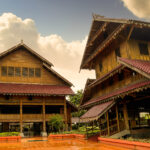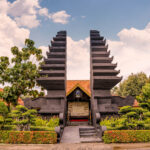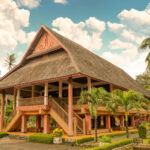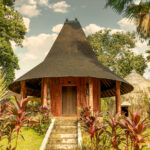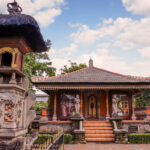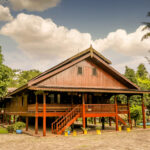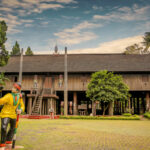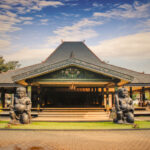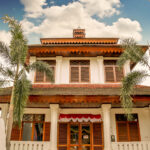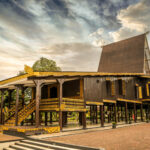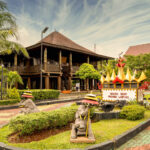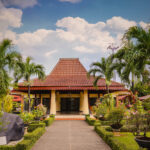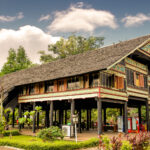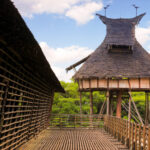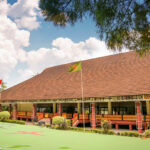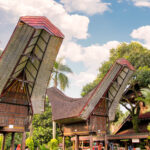Assalamu’alaikum Warahmatullahi Wabarakatuh
Adil Katalino Bacuramin Kasaruga Basengat Ka Jubata
West Kalimantan boasts a captivating cultural diversity. The province is home to various ethnic groups such as the Dayak, Malay, and Chinese, predominantly residing in areas along the Kapuas River, the longest river in Indonesia.
People in this province are no stranger to the scorching heat, as it is situated precisely on the equator. Even in the capital city of Pontianak, during the equinoxes in March and September, you can stand precisely on the imaginary line at the Equator Monument without casting a shadow. A replica of this monument can be found at the West Kalimantan Pavilion at TMII.
The design of the first pavilion was inspired by the Kadriah Sultanate Palace, built in 1771 by Sultan Syarif Abdurrahman Alkadrie. Within the pavilion, there stands a figurative statue of Sultan Abdurrahman Alkadrie alongside his consort, Utin Chandramidi, adorned in traditional attire of Melayu Telok Belanga and Baju Kurung. The scene is complemented by miniature cannons, the sultanate’s flag, and an array of crafts and traditional clothing representative of West Kalimantan’s Malay heritage.
The second building, Betang House or Panjang House, is the traditional house of the Dayak people, commonly housing dozens of families. Supported by dozens of bullion woods, the house has a ladder made from a single long piece of wood without a handrail. The front section is for drying purposes, while the middle section is for traditional ceremonies, with enclosed chambers serving as the room for families of the same descent.
Additionally, there are buildings for storing human bones called Sandung, as well as the Baluk traditional house of the Dayak Bidayuh ethnic group. Towering in height, it serves as a venue for the annual Nyobeng ritual, a special ceremony for the male members of the Dayak community to seek blessings, peace, and tranquility.
Explore the pavilion further in an unforgettable cultural journey while observing traditional items like Mandau, blowpipes, shields, sarang palilit (women’s headgear), and Damak (blowpipe arrows). At specific times, visitors may witness the unique dances of West Kalimantan, namely the Jepin and Luing dances.
DID YOU KNOW?
In West Kalimantan, there is a lively festival known as the Festival Meriam Karbit. The cannons used in the festival can have a diameter of up to one meter, producing thunderous explosions. This tradition originated from the first Sultan of Pontianak, Syarif Abdurrahman Alkadrie, who ordered his warriors to fire cannons to drive away the spirits that disturbed him while building the Kadriah Palace.


